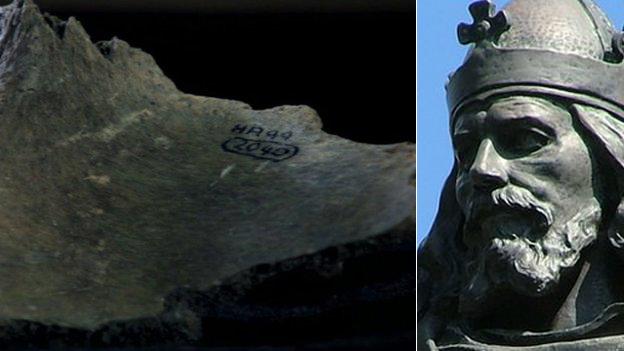'Queen's bones' found in Winchester Cathedral royal chests
- Published
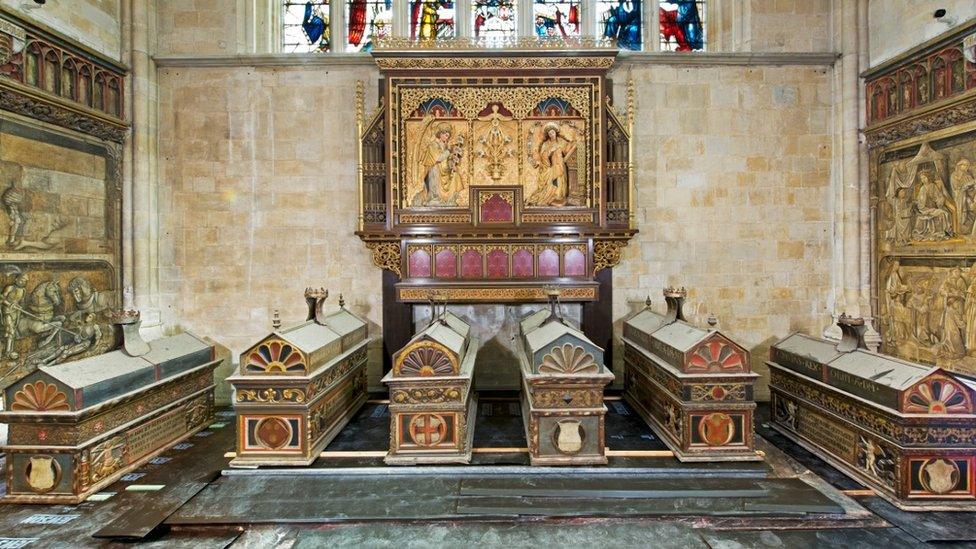
The six chests have been found to hold the remains of at least 23 individuals
Bones held in mortuary chests in Winchester Cathedral could include those of an early English queen, researchers have found.
The contents of six chests have been analysed and radiocarbon-dated.
University of Bristol biological anthropologists found they contained the remains of at least 23 individuals - several more than originally thought.
One is believed to be that of Queen Emma who was married to kings of England, Ethelred and Cnut.
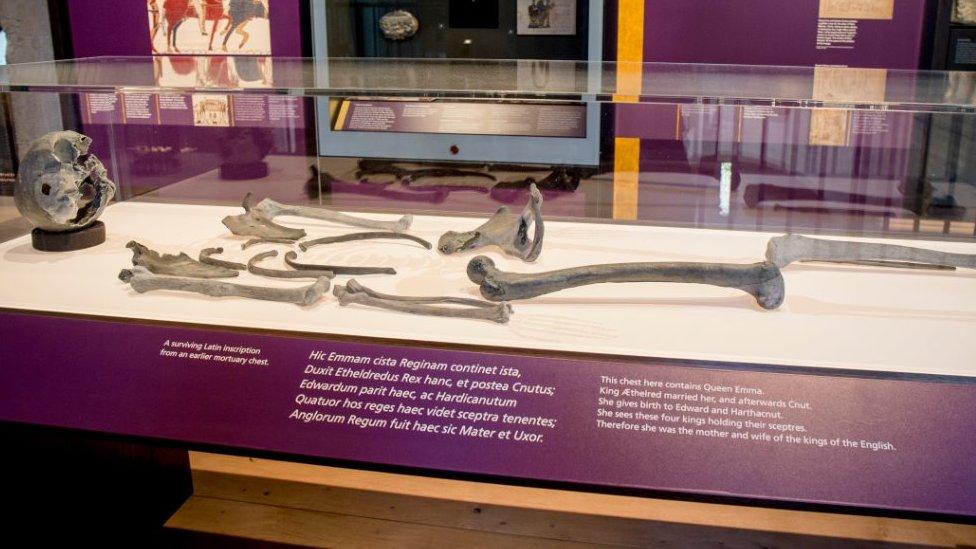
A 3D reconstruction of Queen Emma's bones is part of the Kings and Scribes: The Birth of a Nation exhibition at Winchester Cathedral
Although the chests, originally placed near the high altar, had inscriptions stating who was supposed to be within them, it was known the names bore no relation to the actual contents.
The contents had become mixed when the cathedral was ransacked and the bones were scattered by Roundhead soldiers during the English Civil War in 1642.
They were repacked by locals so it was not known whose remains were replaced, or if they were the same bones.

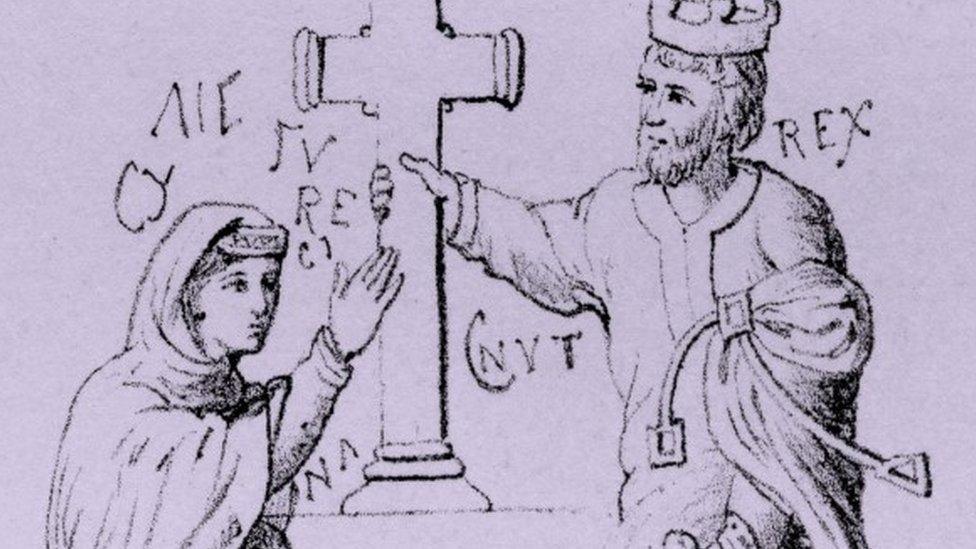
Emma married Cnut after the death of Æthelred
Queen Emma
Born in the 980s, the daughter of Richard I, Duke of Normandy
Married two kings - Æthelred the Unready (reigned 1002-1016) and Cnut the Great (reigned 1017-1035)
Had children including two kings - King Harthacnut (reigned 1040-1042) and Edward the Confessor (reigned 1042-1066)
A key political figure in her own right, she gave the dukes of Normandy a hereditary claim to the English throne, leading to the Norman Conquest in 1066
Described in a Latin inscription on a mortuary chest as the "mother and wife of the kings of the English"
Source: British Library


The six chests originally rested near Winchester Cathedral's High Altar
A research project began in 2012 and has dated the contents of the chests to late Anglo-Saxon and early Norman periods.
More than 1,300 bones were reassembled and analysing the sex, age and physical characteristics led researchers to conclude that a mature female's remains could be those of Emma of Normandy. Her bones were found dispersed in several of the chests.
Further DNA analysis is being carried out to confirm the royal identity.
It had originally been thought that the remains of between 12 and 15 high status individuals were held in the chests, however, the research revealed the partial remains of at least 23 people.
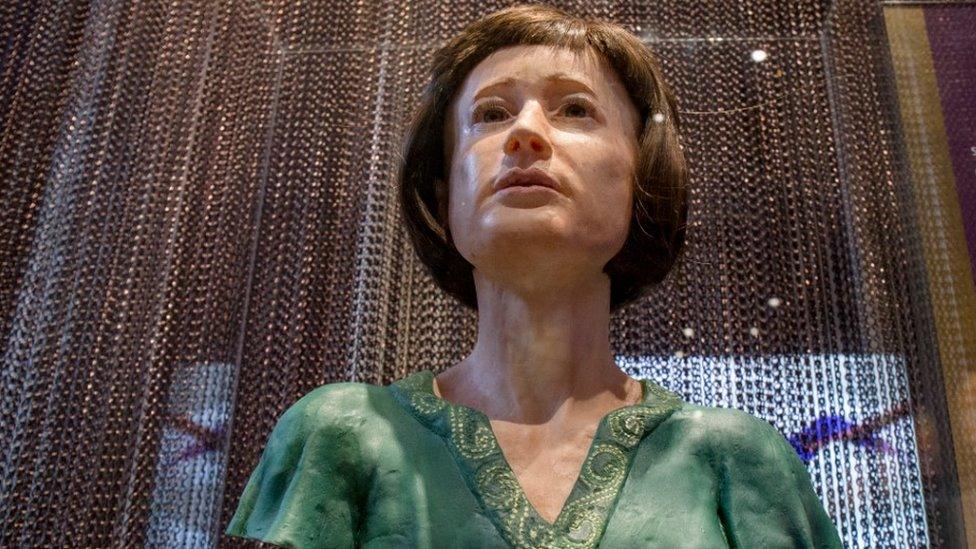
Experts were able to create a 3D likeness of one of the boys whose skeleton was found
There was also an unexpected find of the skeletons of two boys aged between 10 and 15.
Prof Kate Robson Brown said they were "almost certainly of royal blood".
"We cannot be certain of the identity of each individual yet, but we are certain that this is a very special assemblage of bones," she said.
The findings, as well as a reconstruction of the bones of Queen Emma, form part of a major Kings and Scribes: The Birth of a Nation, external exhibition which opens later this month.

Here's some answers to questions readers had about this story:
Samuel Stebbings asked: Where in the church were the bones found?
They were kept in six mortuary chests - painted wooden caskets - which were displayed on stone screen walls either side of the high alter for hundreds of years. Some of the remains had originally been kept in the Old Minster, which was demolished in 1093 after the new cathedral had been built.
At the start of restoration process in 2012 the chests were moved to the Lady Chapel, which became a temporary laboratory where the researchers reassembled the more than 1,300 human bones.
Numerous people wanted to know: Could the boys' remains in fact be those of the sons of Edward IV?
Probably not. The two sons of King Edward IV, Edward and Richard, aged 12 and 9, are thought to have been murdered in 1483 on the order of their uncle, who later became King Richard III. They became known as "The princes in the Tower" after they were kept in the Tower of London by their uncle who had been appointed to look after them after their father died.
Although researchers believe the two juvenile skeletons discovered in Winchester Cathedral were of two boys "almost certainly of royal blood" and aged of a similar age to the princes, they had died sometime between 1050 and 1150 - more than 300 earlier than princes Edward and Richard.
Kathryn Shearman asked: Would any of the present Royal Family be related to Queen Emma? What was her relationship to William the Conqueror?
Yes, William the Conqueror is the 22nd great-grandfather of Queen Elizabeth II and Queen Emma was his great-aunt.
William Burke wanted to know: Will the mortuary chests be placed in their usual locations above the high altar?
Yes, the caskets are already back on display beside the high altar and the bones are in a "safe and secure environment" as the research continues.
- Published3 February 2015
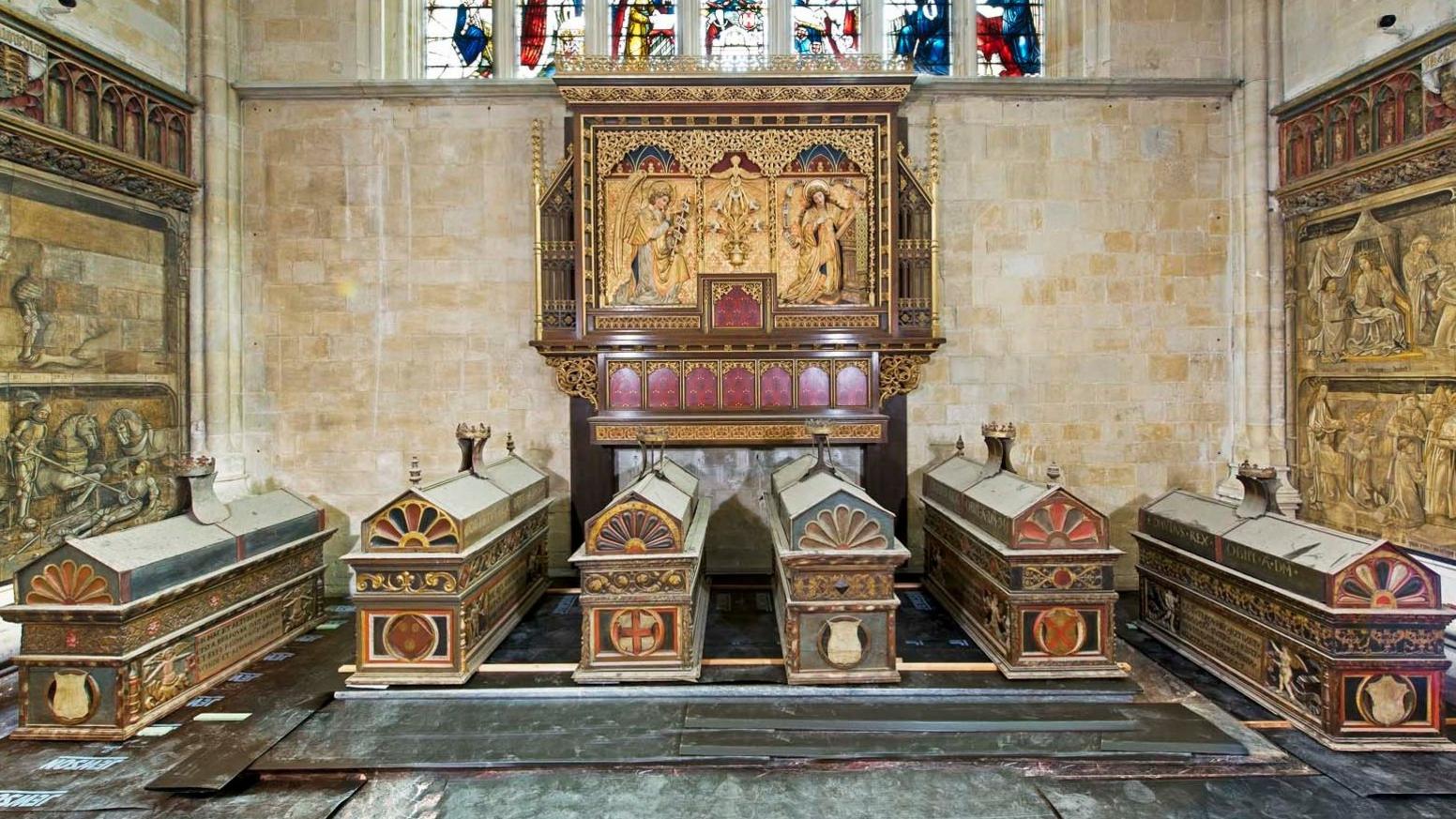
- Published17 January 2014
